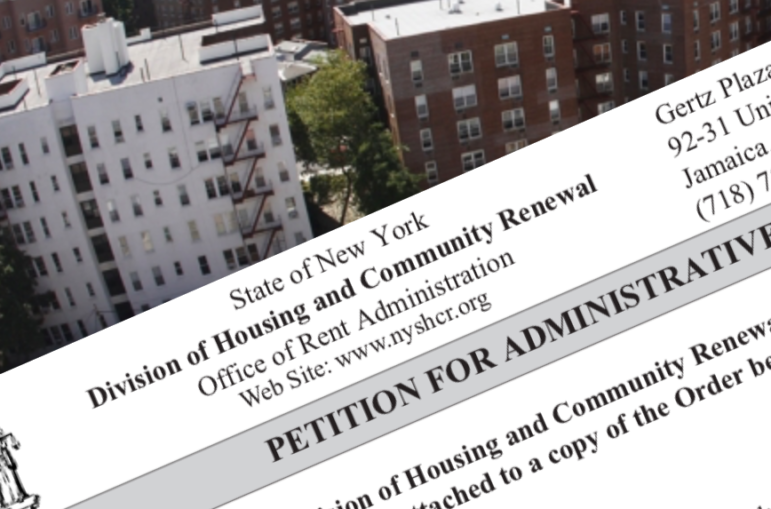
DHCR
The enforcement of the new rent laws will depend on a state agency that recently got a budget boost.
Last week’s dramatic re-writing of the laws covering rented apartments around the state will soon fade from the headlines, but landlords and tenants will operate for years on the landscape the 2019 rent bill has reshaped. Exactly how the letter of that legislation translates into reality will depend in large part on how the state’s Division of Homes and Community Renewal publicizes and enforces the law.
DHCR has been at the center of rent regulation for 35 years, since the city handed over most enforcement of rent stabilization to Albany. In that time, it’s come in for criticism from tenant groups and property owners’ organizations alike. The tenant side has accused the agency of rubber-stamping landlords’ requests to hike rents to cover major capital improvements. Property owners have lambasted the division for processing delays, and at least one landlord has sued the agency to block its inspectors from visiting his property, claiming they lacked standing to do so.
DHCR has defended its performance – pointing in particular to the formation of a Tenant Protection Unit during the Cuomo administration that cracked down on landlords who were illegally de-regulating apartments or making fraudulent IAI (individual apartment improvement) rent increases.
But there’s no denying DHCR has fewer resources to work with than it did just a few years ago. State budget records indicate the agency’s budget headcount has fallen from 950 in 2006-2007 to just 682 in 2018-2019.
| Budget Year | DHCR budgeted staffing |
| 2006-2007 | 950 |
| 2007-2008 | 950 |
| 2008-2009 | 950 |
| 2009-2010 | 940 |
| 2010-2011 | 89 |
| 2011-2012 | 757 |
| 2012-2013 | 745 |
| 2013-2014 | 688 |
| 2014-2015 | 683 |
| 2015-2016 | 683 |
| 2016-2017 | 682 |
| 2017-2018 | 682 |
| 2018-2019 | 682 |
| 2019-2020 | 776 |
The budget for the current fiscal year has DHCR going up to a staff of 776. According to budget division spokesman Freeman Klopott, the budget for the Office of Rent Administration and the Tenant Protection Unit within DHCR will rise from $41 million to $64 million and add 94 full time employees “demonstrating the State’s commitment to protecting tenants.”
Budgeted headcount might not reflect DHCR’s actual person-power, however. As of now, according to the office of the state comptroller, the agency has 597 active employees—well below what was budgeted last year or this year.
That lower-than-budgeted staffing is likely part of the reason why the DHCR workforce handling important tasks related to rent regulations is stretched pretty thin. DHCR says it has 10 inspectors who perform 4,200 inspections a year across the eight-county region in which rent-stabilization laws now apply: the five boroughs along with Nassau, Westchester and Rockland counties—an area spanning 1,192 square miles, which is about as big as the state of Rhode Island.
Get the best of City Limits news in your inbox.
Select any of our free weekly newsletters and stay informed on the latest policy-focused, independent news.
A DHCR spokeswoman tells City Limits, “The new rent laws strengthen tenant protections for New Yorkers, and we look forward to working with our partners in the Legislature and other stakeholders as we implement them.”
DHCR says if a tenant believes that an MCI hike is wrong, they should file a Petition for Administrative Review form within 35 days of the issuance of the order by contacting the Office of Rent Administration at 718-739-6400.









2 thoughts on “Passing Rent Reform Was One Thing. Now it Has to be Enforced.”
If Brooklyn tenants reading this article don’t understand their rights, please contact us. We are a HUD-certified housing nonprofit and offer tenant support. We also offer a Landlord Training course to help small landlords understand their rights and responsibilities. https://www.nhsbrooklyn.org
For years, registration of individual apartments and occasionally whole buildings, were not timely registered with DHCR, despite that requirement in the rent stabilization code. The agency heads knew this, and did nothing to enforce that requirement of the code. Only in the event that a tenant raised the issue, would the issue be raised with a building owner, and only then would it (possibly) be corrected. The significance of the failure to register is that, pursuant to the rent stabilization code, MCI rent increases are prohibited in the absence of proper registration. The annual guideline increases are also prohibited for the failure to file a registration for an apartment or the building. This simple and straight requirement of the rent stabilization code, for timely registration, underpinning the veracity of the actual rent for an apartment, was left adrift. Any assumption by the public that the checks and balances that go along with proper and timely registration were in place, being routinely monitored by the agency tasked with maintaining that order were mistaken. The monitoring if annual registrations was not in place, rather, it was left adrift until the occasional alert tenant came to realize that the annual registration for their apartment or building was missing, for a given year, or, in some cases for many years. The writer of this article is absolutely correct in assuming that it is questionable whether the more rigorous rules and requirements will be enforced at all. Vigilance is key in dealing with DHCR, and unfortunately, most tenants do not even have a clean as to what they should be looking for, to ensure that their rent is correct.